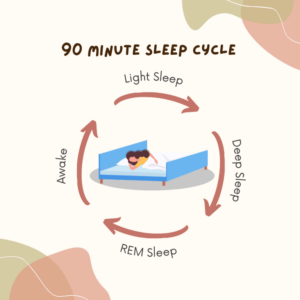Sleep Like Your Ancestors
Published by Zoe Rush on
Sleep Like Your Ancestors: Reclaiming Rest Through Rhythm, Nourishment, and Nature
In a world obsessed with hustle culture, late-night screens, and caffeinated coping, sleep has become a forgotten art. But at Tail to Tip, we believe that deep, restorative rest isn’t just a luxury — it’s one of the most foundational pillars of health. Our ancestors didn’t need white noise machines, melatonin gummies, or $300 weighted blankets to get good sleep. They lived in sync with the sun, honored their body’s rhythms, and nourished themselves in ways that supported real recovery. The good news? You can still tap into that ancient wisdom — and it starts tonight. Let’s talk about how to sleep like your body remembers.Why Sleep Isn’t Passive — It’s Powerful
Sleep isn’t downtime. It’s repair time. During those quiet hours, your body is hard at work:- Repairing muscle tissue
- Regenerating cells
- Balancing blood sugar and hormones
- Detoxifying your brain through the glymphatic system
- Strengthening memory and emotional regulation
Step One: Know Your Chronotype
You’ve probably heard “go to bed early” as a blanket solution — but not everyone is wired to rise with the sun. Your chronotype is your natural, biological sleep-wake rhythm, governed by your genes and hormones. There are four main chronotypes:- Lions – Early risers, sharpest in the morning, best sleeping 9pm–5am.
- Bears – Sync with the sun, ideal schedule is ~11pm–7am.
- Wolves – Night owls, most productive late afternoon, need a later wake-up time.
- Dolphins – Light, fragmented sleepers who thrive with flexible, gentle schedules.
Step Two: Wake with the Sun
Your body runs on a 24-hour cycle called the circadian rhythm, and the #1 thing that sets it? Light. Morning sunlight tells your brain to suppress melatonin (the sleep hormone) and raise cortisol (your energy hormone). This spike gives you energy, mental clarity, and the hormonal alignment that helps you wind down naturally at night. Here’s how to use light wisely:- Get outside within 30 minutes of waking (yes, even if it’s cloudy)
- Don’t wear sunglasses first thing — your eyes need natural light exposure
- In the evening, minimize blue light (screens, LED bulbs) after sunset
- Use candles, salt lamps, or dim amber lights to mimic dusk
Step Three: Master the Sleep Cycle
You don’t sleep in one long stretch — you sleep in cycles, usually 90 minutes long. Each cycle includes:- Light Sleep – A gentle transition into rest
- Deep Sleep – Physical healing, growth hormone release, immune repair
- REM Sleep – Dreaming, emotional processing, memory consolidation
- 6 hours (4 cycles)
- 7.5 hours (5 cycles) ✅
- 9 hours (6 cycles)
Step Four: Understand REM vs. Deep Sleep
Both REM and deep sleep matter — but they do different things:- Deep Sleep (mostly early in the night):
- Repairs tissues
- Strengthens the immune system
- Reduces inflammation
- REM Sleep (mostly early morning):
- Enhances creativity
- Processes emotions
- Supports memory + learning
Step Five: Fuel Your Sleep with Food
Yes, what you eat deeply affects how you sleep. Your body makes melatonin (the sleep hormone) from tryptophan, which needs magnesium, vitamin B6, and glycine to do its job. Where do those nutrients come from? From real, nutrient-dense, nose-to-tail foods:- Liver
- Bone broth
- Collagen-rich cuts
- Pasture-raised eggs
- Leafy greens
- Grass-fed meats
Step Six: Extra Sleep Tips from the Tail to Tip Lifestyle
- No caffeine after noon
- Keep your bedroom cold, dark, and tech-free
- Try mouth taping (look it up — it’s wild but effective)
- Add a bedtime wind-down: magnesium spray, red light, journaling
- Respect your rhythms — even if the world doesn’t
